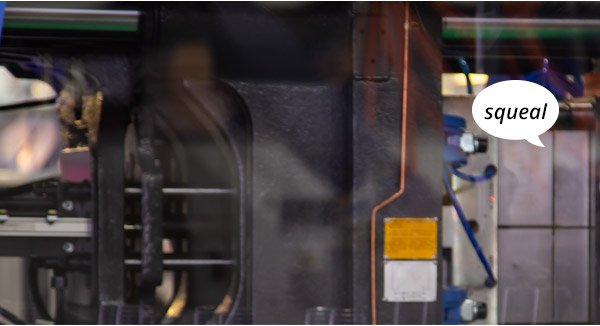 |
||||
The ejector pin squealed
| ||||
|
Stop. It is not going to get better. Hopefully the damage is minor. If you continue you could end up pulling the mold for repair. And that is time lost and parts not made. The issue could be galling. If the pin is not perfectly aligned in the hole, if the pin and the mold are rubbing against each other, and if you have high velocity ejection and retraction creating high heat, you are creating the perfect storm for galling and pins will seize. When a pin seizes prepare yourself for significant damage to the mold. Prevent Galling By Properly Prepping Pins Preventive maintenance for ejector pins is every bit as important as any other mold maintenance procedure. Cleaning and lubricating are crucial to minimize wear and ensure smooth, issue-free performance. And important consideration is heat. High velocity ejection and retraction creates heat. Heat is also created with multiple ejector pulses and long ejector strokes. This frictional heat increases the chances of galling. Depending on location, ejector pins may also have different forces placed upon them to ensure the section of the plastic part ejects properly, but without using too much force. Excessive force might cause the pin to mark or pierce the part. More force can mean more heat. Use the right lubrication at the right location You need an ejector pin grease that holds up in the heat and helps prevent galling. And you need to apply it to get maximum lubricity without marking parts. Slide recommends a two-part process. Part 1: On the back 90% of the pin, completely coat the pin with Super Grease ejector pin grease. Super Grease has operating temps up to 650°F (343°C) so it maintains lubricious properties even in high speed applications. Part 2: Apply our Heavy-Duty 10% mold release on the remaining 10% of the pin not covered with Super Grease. By applying this mold release to the front section of the pin you ensure to provide release to the parts it touches so grease will not contaminate parts. When you install the pins and the mold is in the machine, if your ejector pin is not keyed for a specific orientation, you should be able to freely rotate it when the ejector plates are fully forward. There is a great 4-part series on ejector pins if you want to learn more. It gets into some great detail on all the ins and outs (pardon the pun) of ejector pins. Tooling: Why Ejector Pins Break and How to Prevent It Need help with an ejector pin issue or any mold maintenance questions? Ask An Expert at Slide Products; call 1-800-323-6433; info@slideproducts.com. |
||||